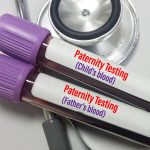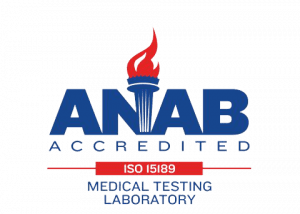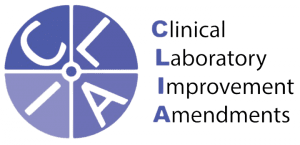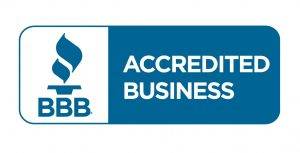Most individuals are aware of cut-off levels when it comes to the permissible intoxication limits for drivers. If your blood alcohol content is 0.80 or more, you can be charged with a crime in many provinces. Cut-off levels, nevertheless, are also an essential component of drug testing. Like alcohol testing, cut-off values show when a person’s blood number of drugs poses a risk to their safety or the public’s. The cut-off limits remain the same whether lab-based testing or testing held at a DNA testing facility. The drug testing process relies on pre-employment drug screen cutoff levels to determine if an employee’s sample is positive or negative. Nonetheless, the cut-off values for the hair follicle, urine, and oral fluid tests range significantly. To provide employers with a better understanding, this article will examine the laboratory testing procedure and the use of cutoff values in greater detail in this article.
Why do you have cut-off levels?
Establishing cut-off limits protects workers’ safety and suitability for duty. It also guarantees that firms handle every employee fairly in terms of drug testing. Companies usually disclose cut-off levels in workplace drug and alcohol policies, which helps ensure that drug testing programs are fair. A test is essentially deemed positive if it finds a drug concentration that is either over or equal to the cut-off level. It is regarded as negative if it is lower than this threshold. Cut-off points provide a reliable measurement of drug consumption.
What Are Common Cutoff Levels for Drug Testing?
Employers should be aware that laboratories will consider standard pre-employment drug screen cutoff levels as thresholds to measure employee test results when performing drug tests for employment. Drug test cutoff values are predetermined thresholds that indicate whether a blood sample is positive or negative for a certain restricted drug. You might be wondering how these employee drug test cutoff values can affect your results, whether you’re an employer or an employee.
What does a drug test determine?
Drug tests determine if drugs or their metabolites are present in urine, oral fluid, or hair follicles. A metabolite is a by-product created when the body metabolizes or breaks down a drug. This happens when a substance similar to a medicine is consumed and moves through the body’s digestive and elimination processes. Some points should be kept in mind before testing or analyzing the results.
- Substances change as the body breaks down a drug. These are the products of metabolism. Drug testing searches for these compounds’ concentrations.
- Drug metabolization is an established procedure since it occurs in the same way for all individuals. Cut-off levels can’t ascertain when, how much, or even how potent a worker consumed drugs.
- Metabolite presence is a solid sign that the subject took the drug’s parent. Using the cut-off level, determine whether the amount swallowed is a risk to their safety.
- Accordingly, metabolite-based drug tests are far more effective in detecting drug abuse and, naturally, the associated safety risks. Several criteria, such as windows of detection for certain test kinds, determine probation drug test cut-off levels. For example, hair has a substantially longer half-life than urine for drug metabolites. It is the recommended approach for follow-up testing as it can identify past drug usage.
Who establishes the cut-off point for drug testing?
Any business that is not subject to the Department of Transportation (DOT) drug test cutoff level standards and rules in the United States is free to choose an appropriate cutoff level. Nonetheless, most businesses use the DOT drug test concentration limits or the Canadian Model for Providing a Safe Workplace as the basis for probation drug test cutoff levels programs.
Techniques for figuring out drug test cut-offs
Every hair test must have a cut-off level that is both high enough to exclude any possible contamination and low sufficient to provide complete confidence that the donor has abstained from drug use in the event of a negative result. Cut-offs should thus be measured precisely. Therefore, if a drug test conducted on-site or at random reveals a level of a drug over the cut-off, we may confirm purposeful substance usage.
Testing facilities like Choice DNA usually have two cut-off values in their design for their urine or fluid drug test cut-offs. These are the details that they provide:
The screening cut-off determines whether a confirmation test is required. Stated differently, it is the upper limit established for an initial screening examination. The sample is submitted for a confirmatory test if the amount of drugs or alcohol found in it exceeds the cut-off. If not, the outcome is deemed negative. Confirmation cut-off: This is the threshold that is chosen for the follow-up drug test. The test is ultimately deemed positive if the sample contains more drugs than the permitted amount.
Drug Test Industry Standard Cut-off Levels
Certain sectors have regulations governing the type of testing specimen and the associated pre-employment drug screen cutoff levels that companies must adhere to while performing drug tests on their employees. The laboratory can ascertain whether a patient is positive or negative for a variety of restricted drugs by using 10 penal drug cutoff levels as a baseline.
Employers must follow established employee drug testing protocols if they operate in a federally regulated industry, such as the DOT. This involves conducting tests with respect to predetermined drug metabolite concentration cut-off thresholds.
Conclusion
With cut-off drug testing, employers will be able to identify current drug usage more readily. They also recommend minimizing the likelihood of results brought on by foreign contamination and reducing the monitoring of drugs used in the past. It is important to understand that a cut-off is a range of parameters that vary depending on several circumstances rather than a single figure that applies to all cases. As mentioned earlier, the drug test will be ruled negative if a specimen tests positive for any of the drugs. Still, the quantity tested is below the original cutoff point. If the quantity is above the first cutoff point, a follow-up test will be carried out, and results will be reported as positive if the amount exceeds confirmatory test cutoff points.



















